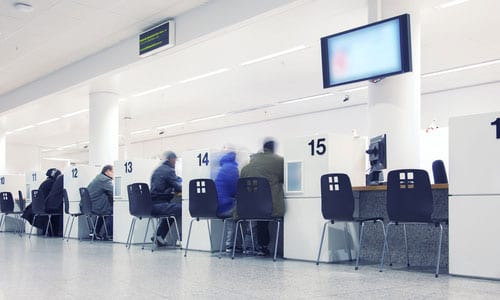As 2020, finally, has come to an end, I can’t help but reflect on how much the world has changed so quickly. For some of this has been overcoming mental health challenges and adjusting our lifestyles. Others have actually used the pandemic to finally put their priorities at the forefront, such as improving their health or spending more quality time with loved ones.
While COVID-19 has affected each and every one of them differently, there’s also no denying that it’s completely turned productivity inside out. Most notably, the productivity hacks that have been promoted for years are no longer effective. In fact, most of these strategies aren’t even realistic anymore and we have to adjust.
While I’m not hating on traditional productivity techniques, the new reality is that they are outdated and must be adapted. For example, these popular productivity hacks just aren’t cutting any longer following COVID-19.
1. The early bird catches the worm.
I’m sure that you’ve come across this adage a million times. In fact, this has been championed by some of the most productive and successful people throughout time. Everyone from Ben Franklin, Tim Cook, Michelle Obama, and Dwayne “The Rock” Johnson are morning birds.
To be fair, there is merit to being an early riser. “It’s been said that morning birds are more proactive, consistent, and aren’t rushing out the door,” Deanna Ritchie wrote in a previous Calendar article. “What’s more, it’s a pretty good time to exercise or find your muse. And, because the world is still sleeping, you’re more productive.”
“Here’s the problem with that,” adds Deanna. “Not everyone is an early riser.” And, you can blame genetics for this.
“Biological differences between early birds and night owls exist,” Robert Matchock, associate professor of psychology at Penn State Altoona, told Fast Company. “The hormone melatonin, whose rise makes the body feel less alert, decreases later in the morning for night owls.” Larks also “have a higher core body temperature in the afternoon, which can be a sign of increased energy at that time,” he added.
So, instead of forcing yourself to wake up at some ungodly hour, follow your own circadian rhythm. Now that you aren’t fighting against yourself, you can plan your schedule when you’re at your best.
And, since you may be homeschooling your kids, there’s another way that this could work in your favor as well. If you’re a night owl, you can focus on your most important work when the kids go to bed. That means you can be with them during the day while still being productive during your peak hours.
2. You need a morning routine.
Yet another common productivity hack promoted by successful individuals is having a morning routine. Look, I totally get it. These habits can supercharge your day since they can set the tone for the day.
But, let’s be real here. Not all morning routines are created equal. Case in point, the hour-long morning routine of Tim Ferriss.
“In an ideal world, we’d all start our mornings like Tim Ferriss,” notes Audrey Goodson Kingo for Working Mother. “The podcaster, investor and productivity expert told Business Insider he begins his day with a ‘very clearly defined’ 60-minute morning routine that includes precisely 22 minutes of meditation, drinking tea (preferably oolong), journaling and working out (on a Peloton or doing acroyoga).”
Ferriss calls it the “recipe” needed to “set up” the rest of his day. While I have nothing against it, it’s just not realistic for everyone, in particular parents.
“Over here in the real world, most working parents begin their day soothing grumpy children and yapping pets while chugging a giant cup of coffee,” states Kingo. “Our ‘recipes’ typically involve pouring cereal in a bowl.”
If you can, definitely try to have some sort of morning routine. But, make sure that you keep it simple enough so that it’s realistic. Most parents recommend prepping at much as you can the night before so that you do have the time to squeeze in some physical activity, journaling, and definitely getting the coffee percolating.
3. Never check your email in the AM.
“I understand why this sounds like a good tip: Reading and responding to email could derail your entire morning and set you back (you know when your 15 minutes of reviewing emails turn into 45—and suddenly, you’re late for work,” writes Emmy Award-winning television producer and founder of ListProducer.com Paula Rizzo. “But, in so many industries, it can be difficult to ignore what has been going on overnight—even for a few hours.”
“Translation: This tip just isn’t realistic in your fast-paced life,” continues Rizzo. “In fact, it might actually cause additional anxiety before you even get into the office.”
To fix this, Rizzo says to go ahead and check your email in the morning. However, “don’t respond unless it will take you less than a minute.” For messages that only require a “yes” or “no” or “that can be forwarded to someone who can take care of it for you is fine,” she adds.
“But anything that requires research or a longer response is off-limits. Mark that message as “unread,” and “go back to it later when you have more time,” adds Rizzo. “Better yet, add it to your to-do list so you’ll be sure to check on it later.”
“Scrolling through and skimming emails first thing in the morning is a good use of time even when you can’t respond right away. Letting them marinate before firing off a response can be invaluable.”
4. You have to eat frogs in the morning.
The frog concept was popularized by author Brian Tracey. For the uninitiated, it doesn’t mean literally eating frogs — which I don’t find all that appetizing. Instead, it’s tackling your most important or challenging task bright and early.
I totally get the appeal here. Most of us tend to be most alert and energetic in the morning. Besides, once this is no longer hanging over your head, it feels like a weight has been lifted off your shoulders.
But, as already mentioned, not everyone is a morning person. Again, as opposed to forcing yourself to work when you aren’t at your peak is counterproductive. As such, it’s a better idea to schedule your “frogs” during your golden hours.
Additionally, even if you are a morning person, there’s a solid chance that you’ve had to adjust your schedule. For example, let’s say you currently have kids at home, and you need to help them with schoolwork. It’s not possible to “eat frogs” at the same time, meaning you’ll have to chomp them down when you can.
5. Use to-do-lists.
Research from Kevin Kruse has found that millionaires don’t rely on to-do-lists. I know. Shocking.
The first reason he found was that they don’t account for time. “When we have a long list of tasks, we tend to tackle those that can be completed quickly in a few minutes, leaving the longer items left undone,” he writes in Forbes. “Research from the company iDoneThis indicates that 41% of all to-do list items are never completed!”
Secondly, “a to-do list doesn’t distinguish between urgent and important. Once again, our impulse is to fight the urgent and ignore the important. (Are you overdue for your next colonoscopy or mammogram?)”
And, finally, “to-do lists contribute to stress,” Kruse states. “In what’s known in psychology as the Zeigarnik effect, unfinished tasks contribute to intrusive, uncontrolled thoughts. It’s no wonder we feel so overwhelmed in the day, but fight insomnia at night.”
Rather than using lists, they live and die by their calendar. How? They add their priorities to their calendar before anything else.
I should add, though, that there’s absolutely nothing wrong with jotting down reminders. The occasional braindump ensures that you won’t forget anything while clearing your head. However, committing to only lists may not be as effective as scheduling.
6. Work in Pomodoros.
In all seriousness, I’m a fan of the Pomodoro Technique. After all, it encourages me to take frequent breaks throughout the day to keep me fresh. Moreover, it has benefits like improving planning and dealing with distractions and interruptions.
The problem is that it’s essentially a time tyrant. How so? Because you’re supposed to work in 25-minutes and then take a break.
Some people don’t like that level of regimentation. More problematic, though, is that it interrupts your flow. That just means that if you’re fully immersed in a task, you have to stop and take a break when the timer goes off.
To solve this predicament, try a modified version called the Flowtime Technique. Created by Zoë Read-Biven, here’s how it works.
- “First, pick a specific task,” she writes. Just make that “it has an end in sight.”
- “Next, start your work. Don’t set any kind of timer but record the time under Start,” she adds. “Now, when you are working, you can only work on the thing that you have written down. Read-Biven dubs this “Unitasking.”
- Here’s the hardest step. “When you feel like you need to take a break, take a break. If you want to stop the task, stop, and take a break.” The key is to note the time under Stop, as well as the length of time.
That’s pretty much it. The jest is that you’re tracking your time while also identifying common distractions. Also, it still encourages you to take breaks, but whenever you need them.
7. Outsource and delegate.
Full transparency here. When done properly, outsourcing and delegating tasks can be timesavers. But that’s only if you know how to clearly communicate your expectations and have people that you trust.
Furthermore, you still need to carve out time to monitor the task. And, most importantly, you also need to know what exactly to delegate and to whom.
If you’re missing any of the above, outsourcing and delegating properly won’t be effective. In fact, they may end up costing you more time — i.e., identifying the right person for the right job and having to correct their mistakes.
There’s another consideration here. Since a majority of us have had to tighten our belts, we may not have the budget to hire freelancers, contractors, or even maintain a full-time team. As such, a better option might be to automate tasks like scheduling, posting to social media, responding to email, billing, and customer service.
8. Stop multitasking.
Multitasking is a myth. Or, so you’ve been told.
In reality, what this refers to is a task-switching, where you’re bouncing your attention from one thing to another. In this care, it’s not possible and can even have consequences like hindering your productivity and lowering your IQ
But what about doing two things at once? Well, some of us can totally pull that off. And it might even be a good thing. Studies have found that multitasking can improve your performance by sharpening multisensory integration.
Additionally, multitasking can “deepen” your time. “There’s a nice form of multitasking, which I tend to think of more as ‘alignment,’” says Laura Vanderkam, author of What the Most Successful People Do Before Breakfast; “This means deepening time, not fragmenting it.”
An example of this would be when you workout with a friend. “You’re running, but you’re also talking and nurturing your relationship at the same time. That’s good multitasking,” she says.
The catch? Multitasking on tasks that don’t conflict with each other. “In other words, you can multitask as long as you’re doing two things that don’t tax the same parts of your brain,” explains Peter Bregman in a Forbes article. “Email while on a conference call? Bad idea. But exercise and commuting? It’s a perfect multitasking marriage.”
9. Silence is golden.
Obvious, right? How can you possibly focus when you’re surrounded by noise? Besides, science has shown that you’ll get more done when it’s quiet.
Of course, can you actually be in an environment where it’s completely silent? Most likely not. I mean, just as I’m writing this, my dog barked because she heard the mail truck, and my neighbor has been running his leaf blower wild. Even if I head noise-canceling headphones,s higher-pitched random noises, like voices, can still come through.
At the same time, there are advantages to listening to music and background noise.
“Overall, research shows that listening to music and background noise can offer various benefits, including improved cognitive performance, improved task performance, improved concentration, increased energy levels, and improved mood,” write the folks over at Effectivilogy. “These benefits mean that listening to music or background noise can be highly beneficial in a variety of circumstances, especially since it is often relatively easy to set them up.”
The caveat is that we all respond differently to music and background noise. You may work best listening to classical music, while others prefer video game tunes. I suggest trying out focus@will. It will curate a personalized playlist to improve your focus.
10. You need a home office.
For those who were fortunate enough to have a home office, the transition to working from home hasn’t been as trying. But, if you don’t have the space for a home office? No worries. You can still be productive.
In another Calendar post, Max Palmer shares how this is possible by:
- Establishing a designated working spot — ideally somewhere “with the fewest distractions and temptations.”
- Furnishing your space. For example, investing in a sitting-standing desk and placing it wherever you have space.
- Removing distractions, such as leaving your phone in another room.
- Using the right tools, like project management software.
If you’re really limited on space because you’re in a small apartment or sharing tablespace with your family, get creative. For instance, you could clean out a closet and make a cozy office in there.
11. Always dress for success.
I guarantee that when you’re new to working from home that this is the most common piece of advice that you come across. Science has also found that what you wear to work matters. But, to be honest, you really don’t need research to prove this.
Just think about the times that you do dress up. You probably feel like a million bucks. And, it can also help you mentally shift into work mode.
However, these are unprecedented times. We’re grieving the loss of the world we used to know — and love. And, we’re all struggling right now.
Despite what conventional wisdom has previously said, the new reality is that you can wear whatever you damn feel like.
I think in a rebuttal to an L.A. Times piece entitled Enough With the WFH Sweatpants. Dress Like the Adult You’re Getting Paid to Be, Esquire’s Ben Boskovich, put it best. “Whether dressing like you’re headed to the office makes you feel better or not is up to you. Not me, and not a deputy fashion director who wants you to wear jeans.”
As long as you’re still being a pro and getting things done, wear what you want. Of course, use some common sense as well. If you have a video call, throw on an appropriate outfit instead of your cozy, yet raggedy, bathrobe.
12. Avoid procrastination.
Procrastination has a bad reputation. And, for good reason.
Putting things off can cause you to fall behind or even stress you out. That can damage your credibility and overall well being. It can also cause you to miss out on opportunities and put a strain on your relationships.
But, believe it or not. Procrastination can actually be good for you. In fact, it may even be able to improve your productivity and happiness.
Why procrastination isn’t always the enemy.
How so? Well, here are six reasons, according to Susanna Newsonen, MAPP:
- Active procrastination. Even though you might be dragging your feet on a specific task doesn’t mean you aren’t getting anything else done. If “you’re an active procrastinator, the rest of your to-do list is probably getting cleared quickly,” explains Newsonen. “And once the rest of the things on your to-do list are done, then all you’ve got left is that one thing you were originally procrastinating on—and you’ve got no choice but to get on with it.”
- Unnecessary tasks disappear with procrastination. If you keep procrastinating on a certain task, after all, you may “reevaluate whether it’s still important you do it.”
- It shines a light on what’s most important to you. “You’re less likely to procrastinate on things you love to do or that really matter to you,” adds Newsonen. “If there’s something you’re struggling to get done, ask yourself why you’re doing it in the first place.”
- Procrastination makes you more creative. When tackling large and daunting projects, it’s common to procrastinate. However, even if you’re not actually working on it, you’re “subconsciously collecting ideas and processing things to prepare you for it.”
- Procrastinating can help you to make better decisions. As opposed to diving in headfirst, procrastination “buys you time to think about all the options and their pros and cons. Once the deadline arrives, you’re ready to decide as you’ve done your research.”
- Procrastination leads to better apologies. We all make mistakes. If this requires an apology, “it’s better to give them (and you) time to cool off,” suggests Newsonen. “This helps you to come up with an authentic apology that clearly shows your regret and your learnings, as well as offers a reason why the mistake happened.”
13. Turn that frown upside down.
I don’t think that any of us want to experience negative emotions like anxiety, stress, or hopelessness. Not only is that detrimental to your health, but it also influences your productivity. And, while there are small ways to lift your spirits, like going for a walk or talking to a friend, forcing yourself can be just as bad.
Back in 2017, research from UC Berkeley found that trying to force yourself doesn’t work. Mainly because resisting negative emotions leads to feeling more psychologically stressed. More interesting was that those who do accept these feelings reported fewer mood disorder symptoms.
“It turns out that how we approach our own negative emotional reactions is really important for our overall well-being,” said study lead author Brett Ford, an assistant professor of psychology at the University of Toronto. “People who accept these emotions without judging or trying to change them can cope with their stress more successfully.”
That couldn’t be any more relevant than right now. During the COVID-19 pandemic, psychologists have recommended that we don’t ignore difficult feelings. Instead, we need to acknowledge them and reach out for help.
14. Using productivity apps.
“It’s fun to get on the app and layout your tasks and set goals, but if you get too into planning, that’s a waste of time,” explains Stephanie Wells, founder of Formidable Forms, over at Inc. “A simple calendar or to-do list is best to quickly plan out your schedule and get things done.”
From my experience, many productivity apps also have a learning curve. That means you need to make a time investment in figuring out the work. Moreover, these tools are so robust that they can be overwhelming and you’ll probably spend more time organizing than doing.
15. Maintain a work-life balance.
For years, it was advised that we strive for work-life balance. Here’s the truth, though. Balance doesn’t exist.
I feel that most of us realized this as we began working remotely. It would be great if you could clock-in at 9 a.m. and work a full day. But, you have to walk the dog, keep up with household chores, and take care of the kids. And, even when you call it a day, you may still have to respond to emails or wrap-up the tasks you didn’t finish earlier.
A better approach is work-life integration.
According to UC Berkeley’s Haas School of Business, work-life integration is “an approach that creates more synergies between all areas that define ‘life’: work, home/family, community, personal well-being, and health.” In other words, instead of setting hard boundaries and compartmentalizing, you connect work and life.
Examples could be bringing your dog to work, having a conference call when your kids are playing in the backyard, or inviting a friend to tag along when running errands. How is this possible in a post-COVID world? Well, stick to a schedule and routine, but also be flexible. But, above all, it’s admitting that you’re not perfect and that you should also put your priorities first.




